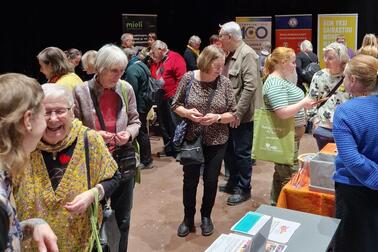
The City’s current Welfare Plan contains 50 targets and 106 measures. At the end of the plan period, 38 per cent of all measures had been completed and 60 per cent were progressing well. Most of the ongoing measures have been integrated into basic activities as operating practices, and their implementation will continue in the coming years. Of the measures targeted at older people, 44% were completed, whereas 35% of measures targeted at working-age people and 29% of measures targeted at children and young people were completed.
Focus on more careful targeting of welfare plan measures
Many measures during this plan period focused on the common themes of a more careful targeting of the measures, the development of staff competence and digital services and their accessibility. The measures were aimed at impacting the physical functional capacity of the residents of Helsinki and the improvement of mental and social welfare. Many of the measures contributed to the experiences of everyday safety and the significance of the living environment.
In some cases, completion of the measures of the Welfare Plan was hindered by cooperation issues across administrative borders. The measures that were clearly taken ownership of and initiated in cooperation immediately after the adoption of the Welfare Plan yielded shared results through excellent collaboration. Better identification of ownership of measures seemed to promote the achievement of good results as well as cooperation. Tying measures and targets in with financial and operational planning promoted the implementation of the Welfare Plan.
“In order for us to improve in assessing the impact of our work on the welfare of the residents of Helsinki, we should take a more comprehensive look at the basic work in various divisions of the City and work carried out in associations and partnerships as well as investments in various social sustainability schemes,” says Special Planner Stina Högnabba, who is in charge of the coordination of welfare and health promotion in the City of Helsinki.
Clear demographic differences in well-being, health and safety
The key objective of the City of Helsinki’s work to promote health and welfare (HYTE) is to bridge the gap between differences in welfare and health and reduce inequality. In light of research and statistical data, there are clear differences between population categories in many aspects of welfare and health, and these differences have mainly increased in recent years. Residents of Helsinki from a higher socioeconomic background are healthier than others. This difference is true for children, young people, people of working age and seniors alike. There are also plenty of differences between districts.
The Helsinki Health and Welfare Barometer (Stadin HYTE-barometri) is an annual follow-up report on the status of the welfare of the residents of Helsinki and the measures that the City is taking to promote the welfare and health of its residents. The report contains highlights of the progress of the measures of the Helsinki Welfare Plan and updates on the welfare, health and safety of the residents from the perspective of the 47 indicators in the Welfare Plan. The barometer observes the six focus areas of the Helsinki Welfare Plan (2022–2025), which are mental welfare, hobbies and leisure, physical activity, healthy lifestyles, good community relations and a safe and beautiful city. The Helsinki Health and Welfare Barometer is a welfare report referred to in section 6 of the Act on Organising Healthcare and Social Welfare Services 612/2021.


